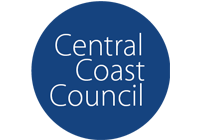East Brisbane Water District
Family blending
In 2021, East Brisbane Water District had 9.7% of couple families with children in step families and 3.6% in blended families.
Information on blended and intact families can be an indicator of the level of family breakup and repartnering within the area, and a potential indicator of socio-economic disadvantage. Family blending only applies to couple families with children. For information more broadly about household and family types, including single-parent families, please see Household Type, Households with Children, and Households without Children.
Derived from the Census question:
'What is the person's relationship (to each other person in the household)?'
Couple families with children
| Family blending | ||||||||
|---|---|---|---|---|---|---|---|---|
| East Brisbane Water District - Total couples with children (Enumerated) | 2021 | 2016 | Change | |||||
| Family blending by type | Number | % | Point Clare - Tascott - Koolewong - Woy Woy Bay % | Number | % | Point Clare - Tascott - Koolewong - Woy Woy Bay % | 2016 to 2021 | |
| Intact Family | 3,175 | 85.9 | 88.4 | 3,183 | 88.5 | 91.4 | -8 | 19601 |
| Step family | 358 | 9.7 | 8.2 | 251 | 7.0 | 5.7 | +107 | 19602 |
| Blended family | 134 | 3.6 | 2.5 | 154 | 4.3 | 2.9 | -20 | 19603 |
| Other couple family | 28 | 0.8 | 0.9 | 10 | 0.3 | -- | +18 | 19604 |
| Total couples with children | 3,695 | 100.0 | 100.0 | 3,598 | 100.0 | 100.0 | +97 | |
Source: Australian Bureau of Statistics, Census of Population and Housing (opens a new window) 2016 and 2021. Compiled and presented by .id (opens a new window)(informed decisions).
(Enumerated data)

Compiled and presented in profile.id by .id (informed decisions).

Compiled and presented in profile.id by .id (informed decisions).
Dominant groups
Analysis of the family blending in East Brisbane Water District in 2021 compared to Point Clare - Tascott - Koolewong - Woy Woy Bay shows that there was a higher proportion of step families as well as a higher proportion of blended families. Overall, 9.7% of total couple families with children were step families, and 3.6% were blended families, compared with 8.2% and 2.5% respectively for Point Clare - Tascott - Koolewong - Woy Woy Bay.
There were a similar proportion of other families and a lower proportion of couples without children. Overall, the proportion of other families was 0.8% compared to 0.9% in Point Clare - Tascott - Koolewong - Woy Woy Bay while the proportion of intact families was 85.9% compared to 88.4% in Point Clare - Tascott - Koolewong - Woy Woy Bay.
Emerging groups
The number of couple families with children in East Brisbane Water District increased by 97 between 2016 and 2021.
The largest change in family blending in East Brisbane Water District between 2016 and 2021 was:
- Step family (+107 couples with children)
